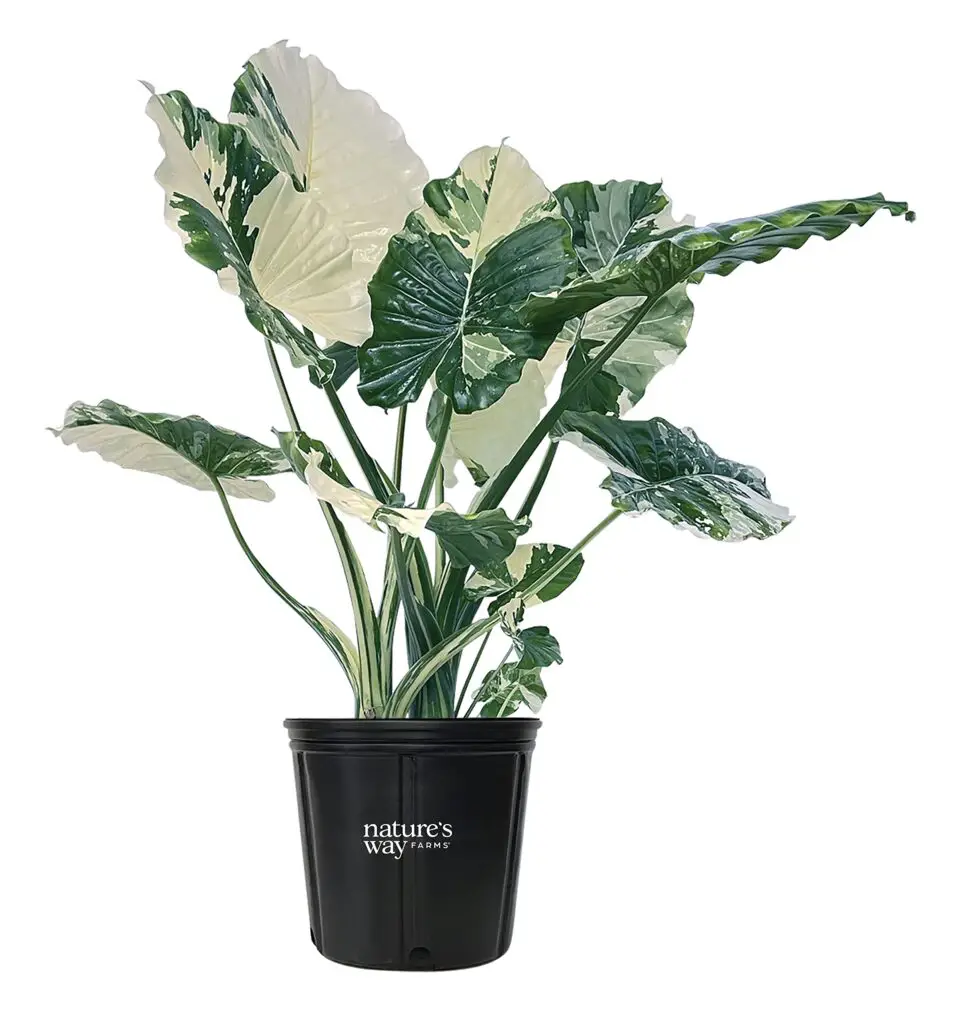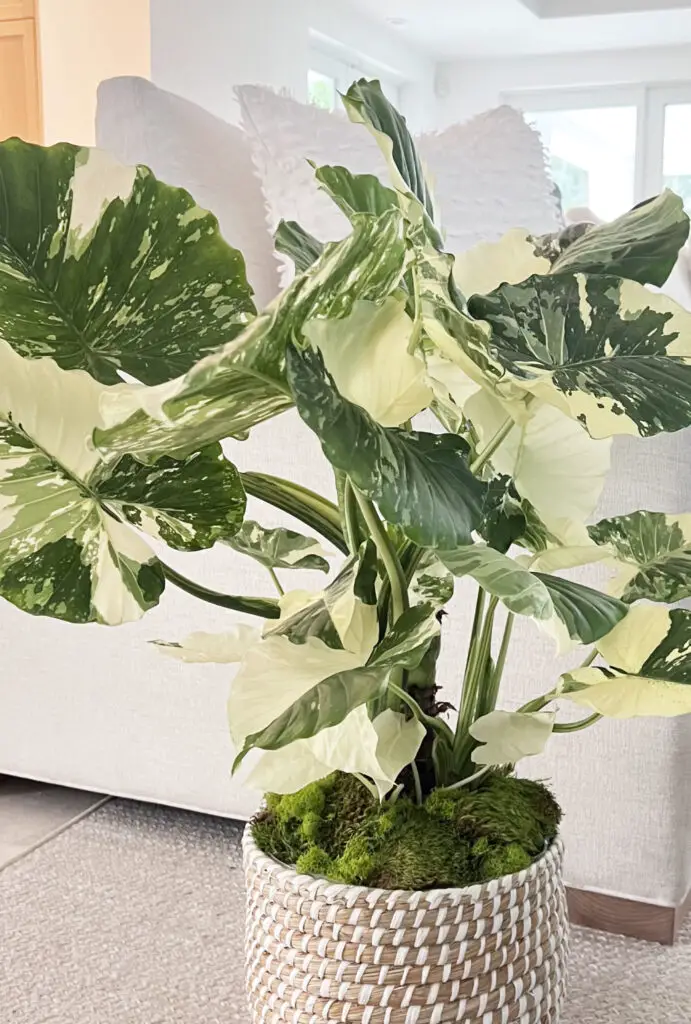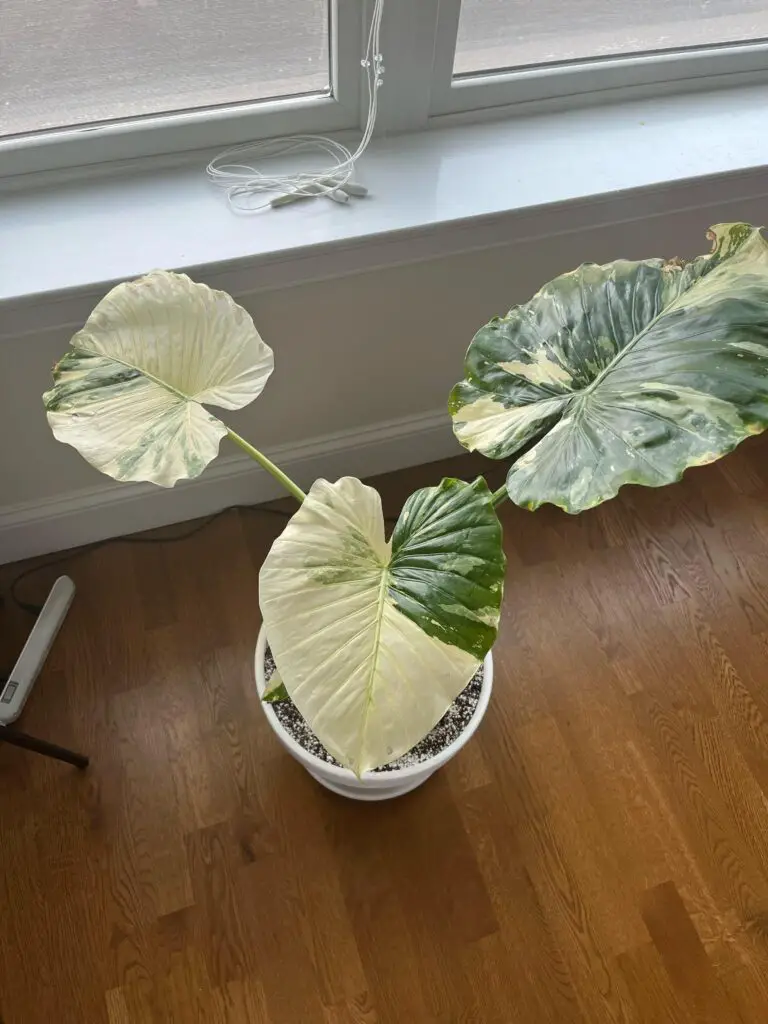Alocasia Dawn requires bright, indirect light, well-draining soil, and consistent moisture to thrive. Avoid direct sunlight and ensure humidity levels are high. Regular fertilization during the growing season helps maintain its vibrant foliage.
Understanding Alocasia Dawn
Alocasia Dawn, often celebrated for its stunning leaves and unique appearance, is a tropical plant native to Southeast Asia. This plant belongs to the Araceae family, which includes many other popular houseplants. Its striking, arrow-shaped leaves feature a beautiful mix of green and silver tones, making it a favorite among plant enthusiasts and collectors.

Caring for Alocasia Dawn can be somewhat challenging, as it has specific needs that must be met for optimal growth. Understanding its natural habitat helps in replicating the right conditions at home. In the wild, Alocasia plants thrive in humid environments with plenty of shade from larger trees. Therefore, providing similar conditions is key to keeping your Alocasia Dawn healthy and vibrant.
One of the most important factors in caring for Alocasia Dawn is ensuring it receives the proper amount of light. While this plant enjoys bright conditions, direct sunlight can scorch its leaves. Instead, aim for a spot that offers bright, indirect light. A south or east-facing window is often ideal, but be sure to filter the light with sheer curtains if necessary.
| Care Factor | Ideal Condition |
|---|---|
| Light | Bright, indirect light |
| Humidity | 60% or higher |
| Soil | Well-draining potting mix |
| Watering | Consistent moisture, not soggy |
| Fertilization | Monthly during growing season |
Humidity is another crucial aspect of Alocasia Dawn care. This plant thrives in high humidity levels of around 60% or more. If your home has dry air, consider using a humidifier or placing a tray of water near the plant to increase moisture in the air. Regular misting can also help provide the humidity needed for healthy growth.

Watering practices should also be monitored closely. Alocasia Dawn prefers consistently moist soil but does not tolerate soggy conditions. Overwatering can lead to root rot. A good rule of thumb is to water when the top inch of soil feels dry to the touch. Always ensure that your pot has drainage holes to allow excess water to escape.
Additionally, choosing the right potting mix is essential for this plant’s health. A well-draining potting mix made from a combination of peat moss, perlite, and orchid bark works well for Alocasia Dawn. This blend ensures that water drains efficiently while retaining enough moisture for the roots.
Fertilization helps support the growth of Alocasia Dawn during its active growing season, typically spring and summer. Use a balanced liquid fertilizer every month during this period to encourage lush foliage and vibrant colors. However, avoid fertilizing during the winter months when the plant is dormant.

In summary, providing the right care for Alocasia Dawn involves understanding its specific needs regarding light, humidity, watering, soil, and fertilization. By replicating its natural environment as closely as possible, you can enjoy a thriving and beautiful plant in your home.
Common Pests and Diseases
Caring for Alocasia Dawn also involves being vigilant about potential pests and diseases that can affect its health. The tropical nature of this plant makes it susceptible to a few common issues. Early detection and treatment are key to preventing significant damage.
- Spider Mites: These tiny pests thrive in dry conditions and can cause yellowing leaves and webbing on the plant. Regular misting can help deter them.
- Mealybugs: These pests appear as small, white cotton-like spots on the leaves and stem. They suck sap from the plant, leading to stunted growth.
- Scale Insects: Scale insects attach themselves to the stems and leaves, appearing as small, brown bumps. They can weaken the plant significantly.
- Fungus Gnats: These small flies are often found in the soil. Their larvae can damage roots when overwatering occurs.
Identifying Issues
Understanding how to identify these pests is crucial for prompt treatment. Here are some signs to look for:
- Check for webbing or discoloration on leaves, which may indicate spider mites.
- Look for sticky residue or honeydew, suggesting mealybugs or scale insects are present.
- Observe any unusual leaf drop or wilting, which can be a sign of root problems or pest infestations.
Treatment Options
If you notice any signs of pests, consider the following treatment options:

- Insecticidal Soap: This is effective against many soft-bodied insects like mealybugs and spider mites. Apply according to package instructions.
- Neem Oil: A natural pesticide that helps control various pests while also promoting plant health.
- Manual Removal: For small infestations, you can wipe pests off leaves with a damp cloth or use a soft brush.
Repotting Alocasia Dawn
Repotting is an essential part of keeping your Alocasia Dawn healthy. Over time, the plant may outgrow its pot or require fresh soil. The best time to repot is during the spring or early summer when the plant is actively growing.
Signs It’s Time to Repot
Here are some indicators that your Alocasia Dawn needs repotting:
- The roots are growing out of the drainage holes at the bottom of the pot.
- The plant is top-heavy and frequently tips over.
- The soil dries out too quickly after watering.
Repotting Steps
Follow these steps for a successful repotting:
- Choose a new pot that is one size larger than the current one, ensuring it has good drainage holes.
- Prepare a fresh potting mix that retains moisture but allows excess water to escape.
- Gently remove the plant from its current pot. Loosen any tightly bound roots.
- Place the plant in the new pot and fill around it with fresh soil, ensuring it’s at the same depth as before.
- Water thoroughly after repotting to help settle the soil and eliminate air pockets.
Seasonal Care Adjustments
As seasons change, so do the care requirements for your Alocasia Dawn. Being aware of these shifts can help you maintain its health year-round.
Spring and Summer Care
During the growing season, Alocasia Dawn thrives with increased light and humidity. Here are some adjustments to make:
- Increase watering frequency as the plant actively grows.
- Fertilize monthly to support new growth.
- Monitor for pests more frequently, as warmer temperatures can lead to infestations.
Fall and Winter Care
As temperatures drop, your plant will enter a dormant period. Adjust care accordingly:
- Reduce watering frequency since the plant will require less moisture.
- Avoid fertilization until spring when growth resumes.
- Maintain humidity levels; consider using a humidifier during dry winter months.
Caring for Alocasia Dawn requires attention to detail and an understanding of its unique needs throughout the year. By staying proactive in pest management, repotting, and adjusting care with seasonal changes, you can ensure your plant remains healthy and beautiful.
Propagation Techniques
Propagating Alocasia Dawn can be a rewarding experience. It allows you to create new plants from a healthy specimen. There are several methods for propagation, including division and offsets. Each method has its specific steps and requirements.
Propagation by Division
Division is the most common method used for propagating Alocasia Dawn. This technique is best performed during the spring when the plant is actively growing. Here’s how to do it:
- Choose a healthy plant and carefully remove it from its pot.
- Gently shake off the excess soil to expose the root system.
- Identify sections of the root ball that have at least one healthy stem and leaf attached.
- Using a clean, sharp knife or garden shears, cut through the roots to separate the sections.
- Replant each division in a suitable pot with well-draining soil.
- Water the new plants thoroughly and place them in a warm, humid environment until they establish.
Propagation from Offsets
Offsets are smaller plants that grow around the base of the parent plant. These can also be used for propagation:
- Wait until the offsets are at least a few inches tall and have developed their own roots.
- Carefully separate them from the main plant, making sure to keep as many roots intact as possible.
- Plant each offset in its own pot with appropriate soil.
- Water well and provide humidity to encourage growth.
Common Issues in Alocasia Dawn Care
Despite careful attention, Alocasia Dawn may still experience issues. Recognizing and addressing these problems early can help prevent serious damage.
Leaf Yellowing
Yellowing leaves can indicate several issues:
- Overwatering: Too much water can lead to root rot, causing leaves to yellow. Always check soil moisture before watering.
- Underwatering: Conversely, if the plant is too dry, leaves may also yellow. Ensure consistent watering practices.
- Pest Infestation: Check for pests like spider mites or scale insects that can stress the plant and cause yellowing.
Wilting Leaves
If your Alocasia Dawn’s leaves are wilting, it may be due to:
- Lack of Water: Ensure that the soil is consistently moist but not soggy. Wilting can occur quickly if the plant is underwatered.
- Excessive Heat: Exposure to direct sunlight or high temperatures can cause wilting. Move the plant to a more suitable location.
Choosing the Right Container
The container you choose for your Alocasia Dawn can significantly impact its health. Here are some factors to consider when selecting a pot:
Pot Size
A pot that is too small can restrict root growth while one that is too large may hold excess moisture. Choose a pot that is slightly larger than the current one, allowing room for growth without overwhelming the roots.
Material
The material of the pot affects moisture retention and drainage:
- Terracotta Pots: These porous pots allow for good airflow and moisture evaporation, making them suitable for Alocasia Dawn.
- Plastic Pots: While they retain moisture longer, ensure they have adequate drainage holes to prevent root rot.
Drainage Considerations
Always ensure that your pot has sufficient drainage holes to allow excess water to escape. Without proper drainage, you risk overwatering, leading to root rot and other issues.
Caring for Alocasia Dawn Outdoors
If you live in a suitable climate, you might consider moving your Alocasia Dawn outside during warmer months. Outdoor care requires special considerations:
Ideal Outdoor Conditions
The best outdoor conditions include:
- Shaded Area: Choose a spot with dappled sunlight or filtered light to protect the leaves from harsh rays.
- Humidity: Ensure that the outdoor environment maintains high humidity levels similar to its natural habitat.
Pest Management Outdoors
Pests can be more prevalent outdoors. Regularly inspect your Alocasia Dawn for signs of infestation and take immediate action if needed. Use natural repellents or insecticidal soap as necessary.
Caring for Alocasia Dawn requires not only attention to its specific needs but also adaptation to various environments and situations, ensuring that this stunning plant thrives in your home or garden.
Additional Care Tips
In addition to the essential care practices already mentioned, there are several other tips and considerations that can enhance the health and appearance of your Alocasia Dawn. These can help you avoid common pitfalls and ensure your plant thrives in its environment.
Leaf Care and Maintenance
The leaves of Alocasia Dawn are one of its most attractive features. Keeping them clean and healthy is important:
- Dusting: Regularly wipe the leaves with a damp cloth to remove dust. This helps the plant absorb more light and prevents pest infestations.
- Pruning: Remove any yellow or damaged leaves to encourage new growth and maintain the plant’s appearance.
- Leaf Shine: Avoid using leaf shine products, as these can clog the pores of the leaves. Instead, stick to natural cleaning methods.
Temperature Preferences
Alocasia Dawn prefers a stable temperature environment. Here are some temperature-related tips:
- Ideal Range: Keep your plant in temperatures between 65°F to 80°F (18°C to 27°C). Avoid exposing it to drafts or sudden temperature changes.
- Cold Sensitivity: Protect your Alocasia Dawn from temperatures below 50°F (10°C). Cold stress can lead to leaf drop and stunted growth.
Common Myths about Alocasia Dawn
As a
popular houseplant, Alocasia Dawn has been subject to various myths. Here are a few common misconceptions:
- Myth 1: Alocasia plants are poisonous. While they do contain calcium oxalate crystals, which can cause irritation if ingested, they are generally safe when handled properly.
- Myth 2: These plants require constant high humidity. While they thrive in humid environments, they can adapt to average household humidity if cared for correctly.
- Myth 3: Alocasia Dawn is a low-maintenance plant. While it is beautiful, it does require specific conditions and care to thrive.
Companion Plants
If yo
u’re considering creating a plant display with your Alocasia Dawn, it’s helpful to choose companion plants that share similar care requirements:
- Pothos: This easy-to-care-for vine thrives in similar light and humidity conditions, making it an excellent partner.
- Ferns: Many ferns enjoy high humidity and indirect light, complementing the aesthetic of Alocasia Dawn.
- Calathea: Known for its colorful foliage, Calathea also enjoys similar light and humidity levels.
Final Thoughts
Caring for Alocasia Dawn can be a fulfilling experience that brings beauty and life into your home. By understanding its specific needs—such as light, humidity, watering, and pest management—you can create an ideal environment for this stunning plant. Whether you choose to propagate it, care for it indoors or outdoors, or display it alongside companion plants, there are countless ways to enjoy your Alocasia Dawn.
Remember that patience is key. Like all plants, Alocasia Dawn may take time to adjust to new conditions or recover from stress. With proper attention and care, this unique plant can flourish beautifully in your space, providing you with joy and satisfaction for years to come.
By following the tips outlined in this article, you can ensure that your Alocasia Dawn remains a vibrant and striking addition to your plant collection, showcasing its unique beauty for all to admire.
